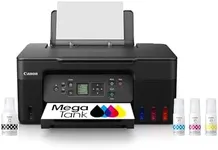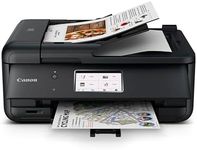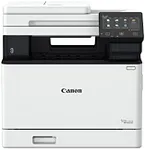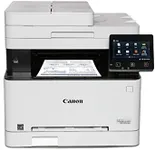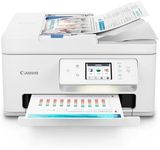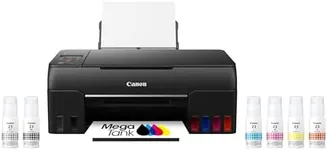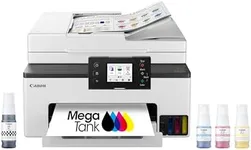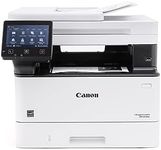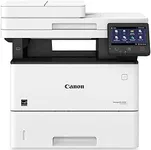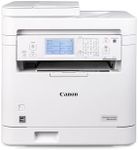Buying Guide for the Best Canon All In One Printers
Choosing the right Canon all-in-one printer involves understanding your specific needs and how different features can meet those needs. All-in-one printers are versatile devices that combine printing, scanning, copying, and sometimes faxing capabilities into one machine. This makes them ideal for both home and office use. To make an informed decision, you should consider several key specifications that will impact the printer's performance and suitability for your tasks.Print Quality (Resolution)Print quality is measured in dots per inch (DPI). Higher DPI means better print quality, which is important for printing detailed images and professional documents. For general home use, a resolution of 600 x 600 DPI is usually sufficient. For high-quality photo printing or professional documents, look for printers with 1200 x 1200 DPI or higher. Consider what you will be printing most often to determine the necessary print quality.
Print SpeedPrint speed is measured in pages per minute (PPM). This spec is crucial if you need to print large volumes of documents quickly. For occasional home use, a speed of 10-15 PPM is adequate. For office environments or frequent printing, look for printers with speeds of 20 PPM or higher. Assess how often and how much you print to choose the right speed.
Connectivity OptionsConnectivity options include USB, Wi-Fi, Ethernet, and sometimes Bluetooth. USB connections are reliable for direct connections to a single computer. Wi-Fi and Ethernet are essential for networked environments, allowing multiple devices to connect to the printer. Bluetooth is useful for printing from mobile devices. Consider your setup and how you prefer to connect your devices to the printer.
Paper HandlingPaper handling refers to the types and sizes of paper the printer can accommodate, as well as the capacity of the paper tray. If you print on various paper sizes or types, such as envelopes or cardstock, ensure the printer supports them. A larger paper tray capacity is beneficial for high-volume printing to reduce the frequency of refilling. Think about the types of documents you print and how often you print to determine your paper handling needs.
Scanner ResolutionScanner resolution, also measured in DPI, affects the quality of scanned images and documents. Higher resolution is important for detailed image scans. For general document scanning, 600 x 1200 DPI is usually sufficient. For high-quality image scans, look for 1200 x 2400 DPI or higher. Consider what you will be scanning most often to choose the appropriate scanner resolution.
Automatic Document Feeder (ADF)An Automatic Document Feeder (ADF) allows you to scan, copy, or fax multiple pages without manually placing each page on the scanner bed. This feature is particularly useful for high-volume scanning or copying tasks. If you frequently handle multi-page documents, an ADF can save you a lot of time and effort. Determine how often you will need to scan or copy multiple pages to decide if an ADF is necessary.
Duplex PrintingDuplex printing enables the printer to print on both sides of the paper automatically. This feature is important for saving paper and creating professional-looking double-sided documents. If you print a lot of reports, brochures, or want to reduce paper usage, duplex printing is a valuable feature. Consider how often you need double-sided prints to decide if this feature is important for you.
Ink/Toner Cost and YieldThe cost and yield of ink or toner cartridges can significantly impact the overall cost of owning a printer. Yield refers to the number of pages a cartridge can print before needing replacement. High-yield cartridges are more cost-effective for frequent printing. Research the cost and yield of the printer's cartridges to understand the long-term expenses. Consider how much you print and your budget for consumables to choose the right printer.
